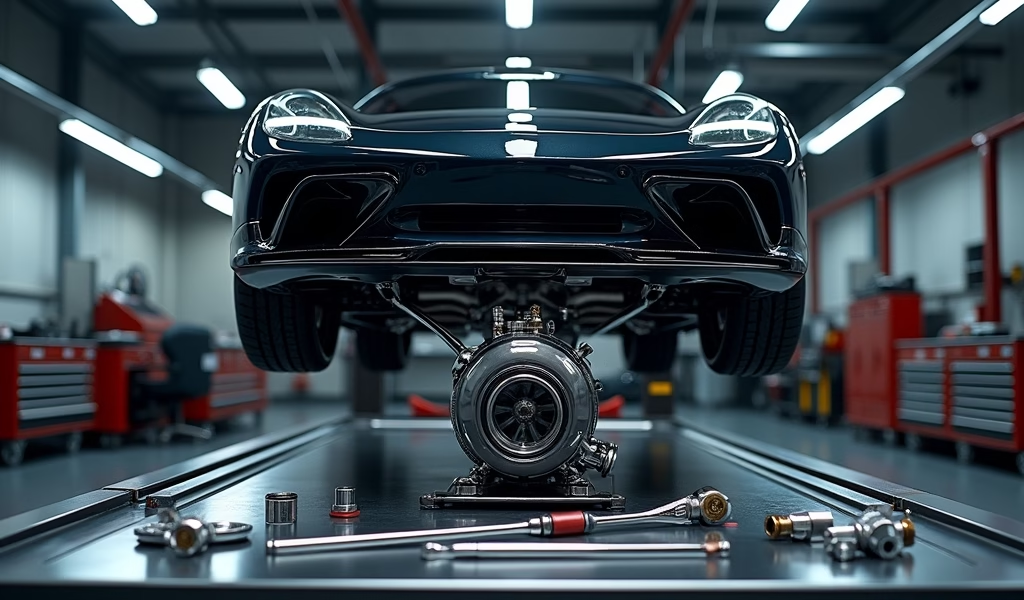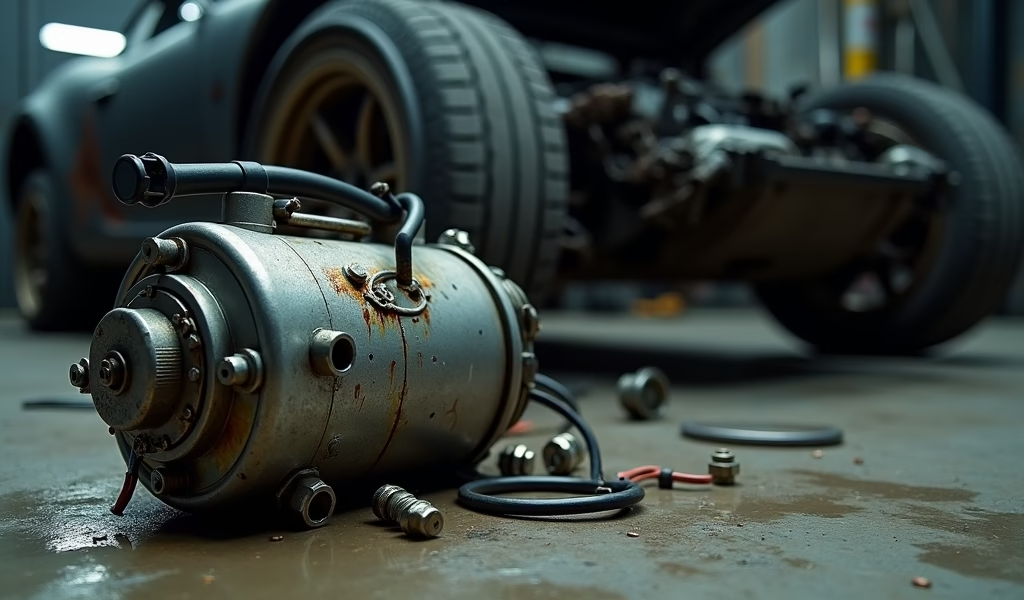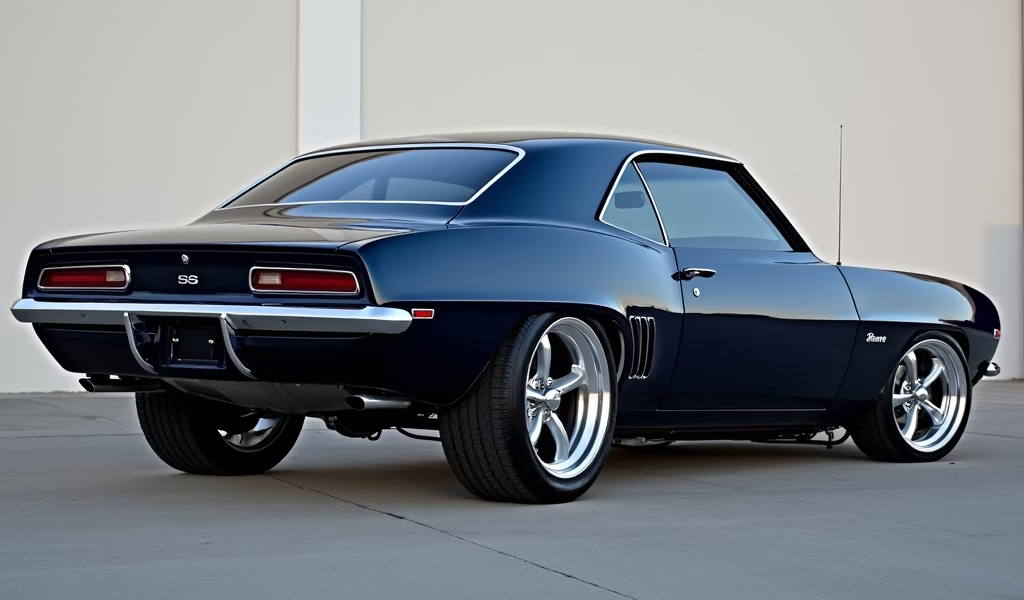Overview
This guide explains how to rebuild air suspension compressors in luxury vehicles, covering diagnosis, step-by-step rebuilding instructions, and maintenance tips that can save owners 50-75% compared to replacement costs. The article emphasizes that most compressor failures stem from easily fixable issues like worn seals and provides both technical guidance and money-saving strategies for DIY mechanics.
Table of Contents
- Understanding Air Suspension Compressor Systems
- Signs Your Air Suspension Compressor Needs Rebuilding
- Benefits of Rebuilding vs. Replacing Your Compressor
- Tools and Materials You’ll Need
- Step-by-Step Rebuild Guide
- Money-Saving Rebuild Hacks
- Testing and Troubleshooting After Rebuild
- Preventative Maintenance Tips
- Conclusion
- Frequently Asked Questions
Understanding Air Suspension Compressor Systems
Air suspension compressor systems are the unsung heroes behind that cloud-like ride quality in luxury and performance vehicles. I’ve rebuilt hundreds of these systems during my 25 years as a master mechanic, and I can tell you they’re marvels of engineering despite their tendency to fail at the most inconvenient times.
At its core, an air suspension compressor is essentially a small electric motor that pressurizes air and delivers it to air springs or bags at each corner of your vehicle. The system maintains precise ride height and comfort by adjusting air pressure based on load, road conditions, and driver preferences.
Most air suspension compressors consist of three main components: an electric motor, a piston or diaphragm assembly, and a drying element. The motor powers the piston, which compresses ambient air and forces it through a dryer to remove moisture before sending it to your air springs. This seemingly simple setup can provide thousands of miles of floating comfort when properly maintained.
Vehicles commonly equipped with these systems include high-end models from Mercedes-Benz, BMW, Audi, Land Rover, and Lincoln, along with many full-sized SUVs and trucks that benefit from adjustable suspension height. While each manufacturer uses slightly different designs, the fundamentals remain consistent across brands.
Signs Your Air Suspension Compressor Needs Rebuilding
Your vehicle has ways of telling you when its air suspension compressor is crying for help. The most obvious sign is uneven ride height—your vehicle might look like it’s taking a bow, with the front end sagging pitifully. In some cases, all four corners might drop, leaving your vehicle sitting uncomfortably close to the pavement.
Listen carefully when your compressor activates. A healthy unit operates with a consistent hum, while failing compressors often produce grinding, whining, or rattling noises that sound like mechanical distress calls. If your compressor runs longer than usual (over 2-3 minutes) or cycles frequently during short drives, it’s struggling to maintain pressure.
Dashboard warning lights are another telltale indicator. Most vehicles display specific air suspension warnings when the system detects problems. These shouldn’t be ignored, as continued operation can damage other expensive components.
The most definitive symptom is the “overnight sag”—parking your vehicle in the evening only to find it significantly lower the next morning. This indicates the compressor either can’t maintain pressure or is failing to activate when needed. According to Motor Trend’s suspension specialists, this particular symptom indicates your system has developed leaks that the compressor can no longer overcome.

Benefits of Rebuilding vs. Replacing Your Compressor
When facing air suspension issues, you’ll typically encounter two options: replace the entire compressor assembly or rebuild your existing unit. Having advised countless customers on this decision, I can confidently say rebuilding offers substantial benefits in most scenarios.
The most compelling advantage is cost savings. A new OEM compressor assembly can range from $800 to over $2,000 depending on your vehicle, while a comprehensive rebuild typically costs between $150-$300 in parts. Even when factoring in your time (or a shop’s labor), you’re looking at savings of 50-75%.
Beyond financial considerations, rebuilding allows you to address the specific failure points rather than discarding a mostly functional assembly. Most compressor failures stem from worn seals, dried diaphragms, or electrical issues—all relatively simple fixes that don’t justify complete replacement.
There’s also the satisfaction and knowledge gained from understanding your vehicle’s systems. Working through a rebuild gives you intimate familiarity with how your suspension operates, making future diagnostics and maintenance significantly easier. This knowledge can save you thousands over your vehicle’s lifetime.
Finally, for owners of older or discontinued models, rebuilding may be the only practical option when new replacement parts are scarce or prohibitively expensive. I’ve helped customers keep 15-20 year old luxury vehicles on the road through strategic rebuilds when new parts were no longer available.
Tools and Materials You’ll Need
Gathering the right tools and materials before starting your rebuild will save you frustration and multiple trips to the parts store. In my shop, I prepare everything in advance to ensure smooth workflow.
For basic hand tools, you’ll need:
- Socket set (metric or standard depending on your vehicle)
- Torx and hex bit sets
- Screwdrivers (flathead and Phillips)
- Needle-nose pliers
- Wire cutters/strippers
- Multimeter for electrical testing
Specialty items that make the job easier include:
- Snap ring pliers if your compressor uses retaining rings
- Small pick set for O-ring removal
- Compressed air for cleaning (if available)
- Bench vise with soft jaws to hold components
For materials, you’ll need:
- Compressor rebuild kit specific to your model (includes gaskets, seals, and diaphragms)
- Dielectric grease for electrical connections
- Silicone lubricant for O-rings and seals
- Electrical contact cleaner
- Thread locker for securing fasteners
- Zip ties for organizing wiring
Quality matters when selecting your rebuild kit. Generic kits can work but often use lower-grade materials that may fail prematurely. I recommend purchasing either OEM parts or premium aftermarket kits from established brands like Arnott or P2M. These typically cost $30-50 more but provide significantly better longevity and performance.
Before purchasing, verify compatibility with your specific compressor model. Many suspension components look similar but have critical internal differences. Check your vehicle’s VIN or compressor part number to ensure perfect fitment.
Step-by-Step Rebuild Guide
Now for the heart of the matter—rebuilding your air suspension compressor step by step. I’ve performed this procedure hundreds of times, and following this methodical approach will help ensure success.
First, locate and safely remove your compressor assembly. In most vehicles, it’s mounted in the trunk, rear cargo area, or under the vehicle near the spare tire. Disconnect the negative battery terminal before proceeding to avoid electrical shorts or accidental system activation.
Before disassembly, take multiple reference photos from different angles. This simple step has saved me countless headaches during reassembly. Pay particular attention to wire routing, hose connections, and mounting orientation.
Begin disassembly by removing the air filter/dryer assembly, typically attached via a threaded fitting or quick-connect. Next, carefully disconnect electrical connections, noting their positions. Many compressors have pressure switches or solenoids that must be reconnected correctly.
With external components removed, separate the motor housing from the compressor block. This usually involves removing several bolts in a specific sequence. Work slowly and keep all fasteners organized according to their location.
Inspect the motor first, looking for worn brushes, damaged commutator, or bearing issues. Clean all electrical contacts with contact cleaner and a soft brush. If the motor spins freely and shows minimal wear, it can likely be reused with fresh brushes if needed.
Move to the compressor section, examining the piston, cylinder walls, and valves for excessive wear or scoring. Light scoring can often be polished out with very fine wet sandpaper, but deep grooves indicate the need for replacement parts.
Replace all O-rings, gaskets, and seals with new parts from your rebuild kit. Apply a thin coat of silicone lubricant to each seal before installation. Be especially careful with valve seals—they must seat perfectly to prevent pressure loss.
After replacing all wear items, reassemble in reverse order, using your reference photos as guides. Apply thread locker to critical fasteners but avoid over-tightening, which can crack casings or distort sealing surfaces.

Money-Saving Rebuild Hacks
After decades in the shop, I’ve developed several cost-saving tricks that don’t compromise quality. These hacks can significantly reduce your rebuild expenses while maintaining performance and reliability.
First, don’t immediately dismiss a rebuilding project if your specific kit isn’t available. Many compressors use standardized O-rings and seals that can be purchased individually at fraction of the cost. I’ve often assembled custom rebuild kits using standard O-rings from industrial supply houses for under $20.
Motor brushes are another opportunity for savings. Instead of purchasing expensive OEM brushes, check the dimensions and consider brushes from power tools or generic automotive applications. Carbon brushes with similar dimensions will often work perfectly at one-third the cost.
For dried-out diaphragms, a temporary emergency fix involves carefully applying a thin coat of high-temperature silicone sealant to restore flexibility. While not a permanent solution, this can get you home or to a repair shop without expensive towing.
When facing electronic control issues, don’t immediately replace the entire module. Many failures stem from corroded connections or damaged relays that can be individually repaired. A $5 relay replacement can often fix an issue that dealers might address with a $500 control module.
For compressors with internal drying elements, generic desiccant beads from hardware stores work nearly as well as expensive OEM dryers. I’ve successfully used aquarium filter media as a cost-effective substitute in many rebuilds.
The bearing replacement process can also be simplified with household items. If you don’t have a bearing press, sockets of appropriate diameter can serve as improvised bearing installation tools when used carefully with a bench vice.
Before reinstallation, thoroughly check your air lines for leaks using soapy water. Tiny pinhole leaks in air lines are common failure points that can cause your newly rebuilt compressor to overwork and fail prematurely. Address these with inexpensive air line repair kits rather than complete line replacement.
Testing and Troubleshooting After Rebuild
Once your rebuild is complete, proper testing is crucial before reinstallation. In my shop, I never return a rebuilt compressor to service without thorough bench testing first.
Start with a basic function test by connecting the compressor to a 12V power source (a spare battery or power supply) and attaching a pressure gauge to the output. The compressor should build pressure smoothly without excessive noise or vibration.
Monitor pressure buildup over time—most compressors should reach 100-150 PSI within 2-3 minutes. If pressure builds slowly or stalls at a certain level, you likely have internal leaks that need addressing.
Listen carefully during operation. Grinding or knocking sounds indicate mechanical issues, while excessive motor noise might point to bearing problems. A properly rebuilt compressor should run relatively quietly with a consistent tone.
Check for leaks using soapy water applied to all connections and seams. Bubbles will reveal even tiny leaks that could cause problems later. Pay special attention to valve assemblies and seal areas.
After reinstallation, monitor system pressure and compressor cycling. A healthy system should maintain pressure for several days when parked. If your vehicle drops overnight, you have a leak somewhere in the system that needs attention.
Common post-rebuild issues include:
- Thermal cutoff trips: Often caused by binding in the piston assembly or excessive friction
- Pressure relief valve activation: Indicates over-pressure conditions or valve adjustment issues
- Intermittent operation: Usually points to electrical connection problems or relay issues
- Excessive moisture: Suggests dryer element problems or improper installation
In my experience, 90% of post-rebuild problems stem from either improper seal installation or electrical connection issues. Carefully recheck these areas first before diving into more complex troubleshooting.
Preventative Maintenance Tips
Keeping your newly rebuilt compressor running smoothly requires ongoing maintenance. These professional tips will help extend your system’s lifespan significantly.
First, regularly inspect your air filter/dryer element. This simple component prevents moisture and contaminants from damaging internal seals and components. I recommend replacement every 2-3 years even if no visible issues exist.
Monitor your system’s duty cycle—how often and how long the compressor runs during normal driving. A properly functioning system should only run occasionally to maintain pressure. If you notice increased frequency, investigate for small leaks before they cause major problems.
Consider installing a water separator in humid climates. Excess moisture is the primary enemy of air suspension components, and a simple inline separator can dramatically extend system life for around $30.
For vehicles driven seasonally or parked for extended periods, I recommend using the suspension maintenance mode (if equipped) or manually relieving system pressure to avoid unnecessary cycling. Many luxury vehicles have a specific setting for this in their onboard menu systems.
Clean electrical connections annually using contact cleaner and apply dielectric grease to prevent corrosion. This five-minute task prevents many common electrical failures I see in the shop.
Finally, address any suspension warning lights promptly. Modern systems are remarkably good at detecting minor issues before they become major failures. Ignoring these early warnings often leads to cascading failures that affect multiple components.
For vehicles in cold climates, consider a synthetic lubricant upgrade for your compressor. Standard lubricants can thicken in extreme cold, causing excessive strain on compressor motors during startup.
Conclusion
Rebuilding your air suspension compressor is one of the most satisfying and cost-effective DIY projects you can tackle on a modern vehicle. With the right approach, you can save hundreds or even thousands of dollars while restoring that magic carpet ride quality that made you fall in love with your vehicle in the first place.
Throughout this guide, we’ve covered everything from basic diagnosis to advanced rebuild techniques and preventative maintenance. The key takeaway is that most air suspension failures stem from relatively minor issues—worn seals, dried diaphragms, or electrical connections—that don’t require complete system replacement.
By investing a few hours and typically less than $300 in parts, you can breathe new life into your suspension system while gaining valuable knowledge about your vehicle’s operation. This hands-on experience not only saves money today but empowers you to tackle future maintenance with confidence.
Remember that patience and attention to detail are your best tools during this process. Take your time, document everything, and don’t hesitate to consult model-specific information for your particular vehicle. The satisfaction of hearing that compressor quietly hum to life and watching your vehicle rise to its proper height is worth every minute spent.
Whether you’re maintaining a classic luxury car or extending the life of your daily driver, a well-executed compressor rebuild represents the perfect balance of cost savings and quality results—the hallmark of truly rewarding automotive DIY work.
Frequently Asked Questions
How long does an air suspension compressor rebuild typically last?
A properly rebuilt compressor typically lasts 3-5 years under normal driving conditions. This lifespan can be extended with regular maintenance and addressing small leaks in the system promptly.
Can I rebuild my compressor if the motor has failed?
Yes, but it depends on the type of failure. Worn brushes and minor electrical issues can be repaired, while burnt windings or severely damaged armatures typically require motor replacement or complete compressor replacement.
How long does a typical rebuild take for a DIY mechanic?
Most DIYers can complete the rebuild in 3-4 hours for their first attempt. Subsequent rebuilds typically take 1-2 hours once you’re familiar with the process.
Is it worth rebuilding an air compressor on a high-mileage vehicle?
Absolutely, especially if the rest of your air suspension system is in good condition. The compressor is often the first component to fail, and rebuilding it can extend the system’s life significantly regardless of vehicle mileage.
What’s the most common cause of compressor failure after a rebuild?
Improper seal installation or using low-quality rebuild components is the leading cause of premature failure. Always use high-quality seals and ensure they’re properly seated during reassembly.
p>

